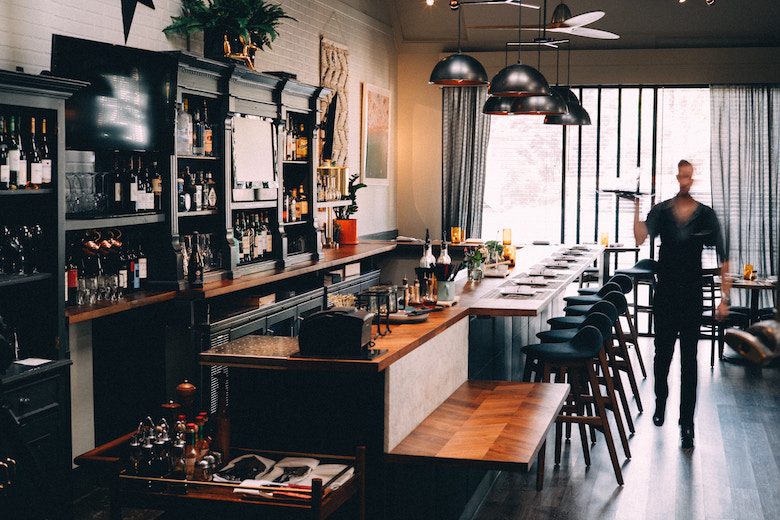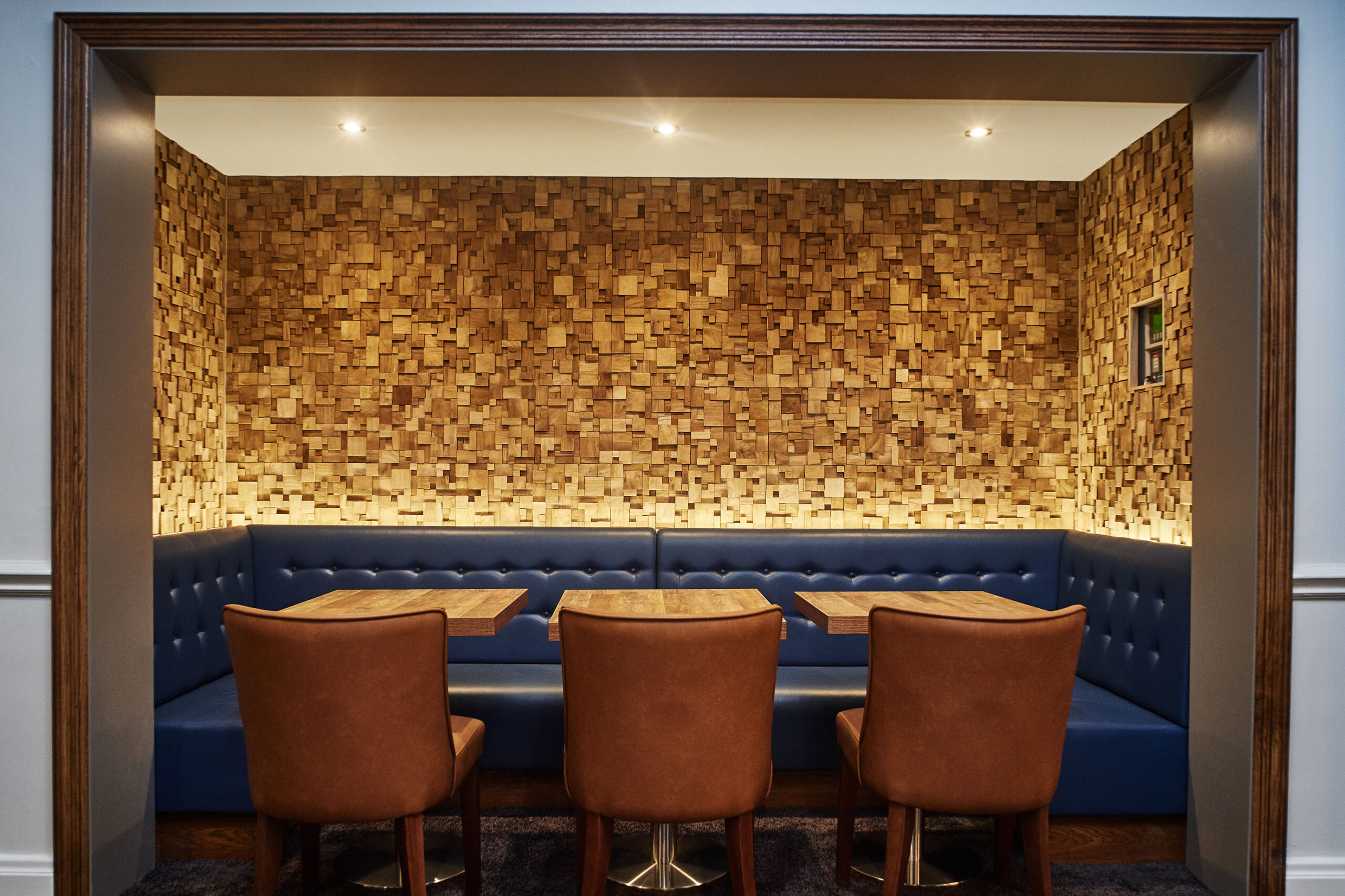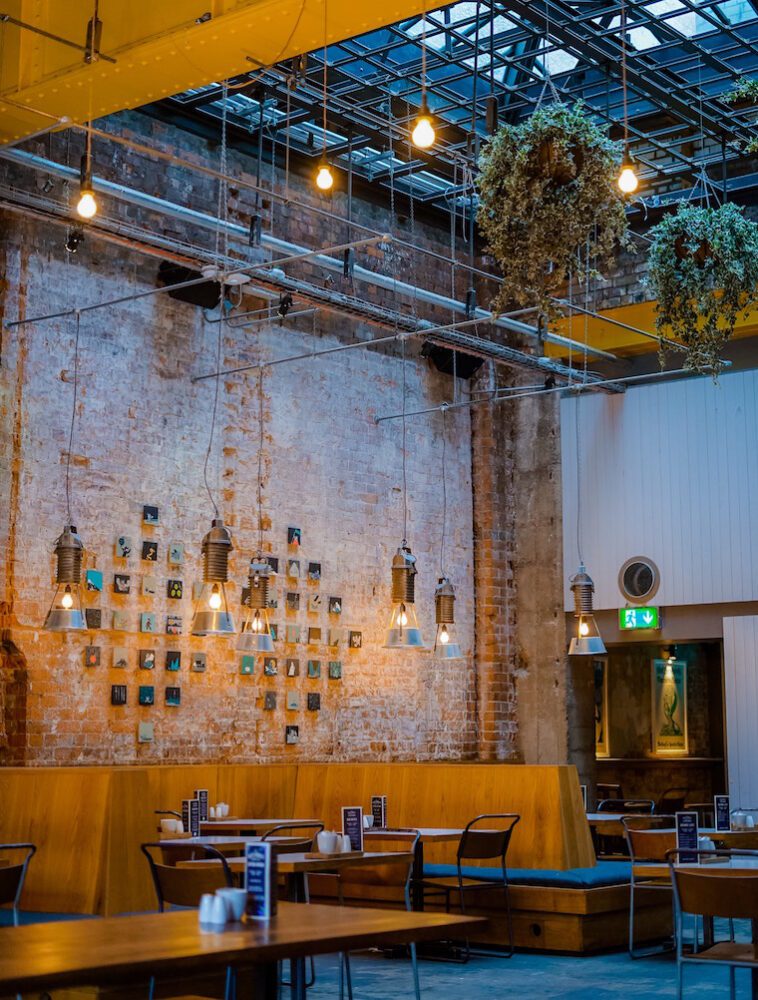We’ve all been in a restaurant that’s so noisy it interfered with our enjoyment of the meal, and poor acoustics can be a major problem for restaurant owners. In this post we’ll show you how to create good acoustics using restaurant interior design principles, so you can ensure your customers can relax, talk, laugh and enjoy their time in your venue.
To understand how to improve the acoustics in your restaurant it’s useful to know a bit about how sound works. Sound travels in waves, and these waves reflect back off flat surfaces, bouncing back into a room if you’re indoors. This reverberation is known as ‘live acoustics’ and is great if you’re running a theatre or creating a music room. But if you are setting up a restaurant or cafe these sound waves can cause high noise levels and an echoey, tinny feel. These spaces need softer acoustics, and often this requires careful planning and attention from the outset.

Creating the right acoustics in a space means looking for troublespots like large, flat, hard surfaces – for example, plastered walls, glass windows and wooden or tiled floors. Once you’ve identified these as a potential issue there are some simple ways you can apply interior design wisdom to improve the sound in your space. Here are 7 ways to create great acoustics in your restaurant:
How to improve restaurant acoustics
1.Flooring
Cover wooden, tiled or concrete floors with rugs or carpets if noise is a problem. Be careful of trip hazards if you use rugs, and place them just in the seating areas, or get them set into the floor. If you’re laying a vinyl floor you can install an acoustic underlay first, which will trap sound waves and muffle noise.
2.Windows

If you have a large window area and it’s causing issues in terms of noise, line the windows with curtains – even left open, curtains will absorb some sound and improve acoustics in a space. Velvet or thick upholstery fabrics are ideal. You can fix acoustic blinds which will dampen down internal noise.
3.Walls

If you have pictures on your walls, set them a few centimetres from the wall to create an extra space to absorb sound. This space can be left open or filled with foam for extra sound insulation. Wallpaper or timber wall cladding will also help reduce noise, especially if they are ridged or textured.
4.Space
Try to break up the space using your tables and chairs. This will interrupt sound waves, but ensure your layout still allows customers and staff to flow effectively around the restaurant.
5.Ceiling

Install acoustic panels made from hard foam to your ceiling. These are easy to apply and are very effective at absorbing sound, although they don’t always look fantastic so you might need to find ways to hide or blend them into the decor. If you have high ceilings you could get creative and use plants and hanging installations not only as eye-catching features, but also to improve the acoustics.
6.Seating
Fixed seating and upholstered seating in a restaurant will also break up sound waves and improve acoustics. Again, the thicker the fabric the more effective it will be at absorbing noise.
7.Lighting

Large, pendant lights disrupt sound waves as well as creating an interesting focal point in a space. Opt for textured, non-metallic surfaces.
In essence, for great acoustics your restaurant interior design needs to break up large, flat surfaces using soft, round, absorbent materials and shapes to stop sound wave reverberation. If you need any help with improving the acoustics in your venue do get in touch. For more on restaurant design go here and here.